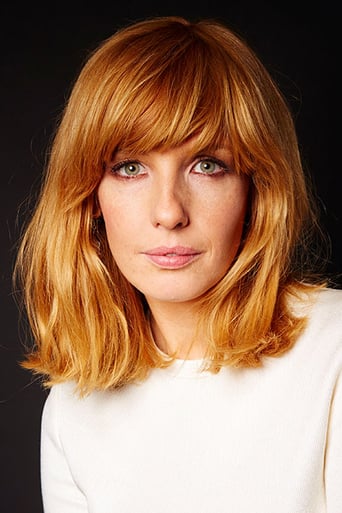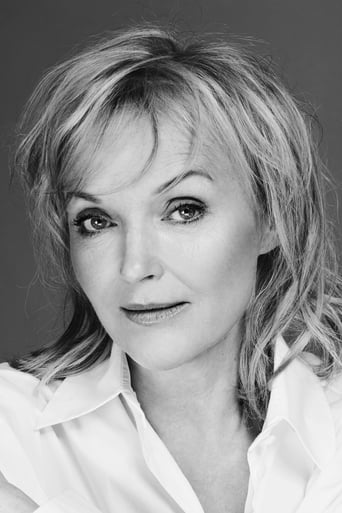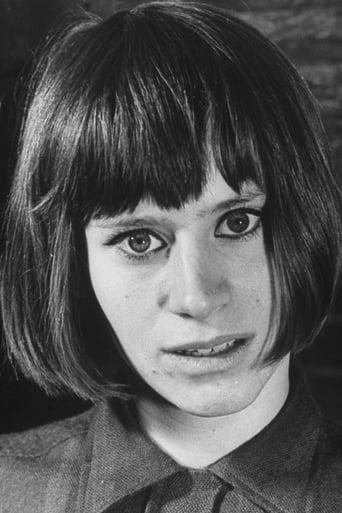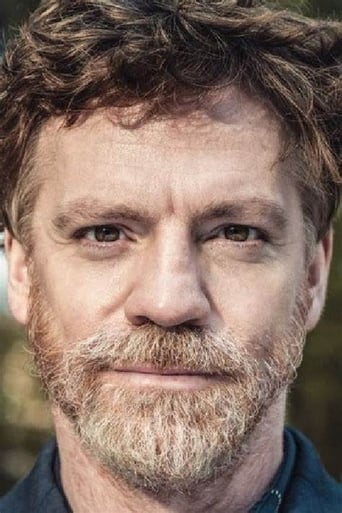ada
the leading man is my tpye
Stometer
Save your money for something good and enjoyable
WillSushyMedia
This movie was so-so. It had it's moments, but wasn't the greatest.
Fulke
Great example of an old-fashioned, pure-at-heart escapist event movie that doesn't pretend to be anything that it's not and has boat loads of fun being its own ludicrous self.
tedg
I sometimes mention films in which architecture plays a role. This fascinates me. I believe that the next generation of cinema will be highly spatial, with context in surroundings becoming more important.Welles' "Othello" used space in ways that both implied dangerous conscious reflection and showed the constraints of the world that drive the tragedy. Greenaway's "Belly" used architecture in more visceral way, merging the urge of forms with the relations among components of a human.This film here goes even further. It is no wonder that it is Roeg's least accessible movie, sometimes considered a failure. I recommend it. Here come some spoilers; I think it best for you to not read this before you have seen it.The character in this case is a house in Ireland, a very specific place on the border between the two religions. This is a place where the pre-Christian notions from Viking magic are still recognized and there is a tradition that the Celtic nuns were witches in this vein.A young woman from London buys the dilapidated house. She is an architect who worked in the firm run by Donald Sutherland's character. Something traumatic happened to the two of them, most likely an affair and she has left to find herself. That involves rebuilding this cottage. We are told that she will keep the outside as it is, but completely re-arrange the insides. Very quickly, the magic of the place conflates this building and its insides with her body, the "insides" being her womb. The cottage had been owned by Rita Tushingham's character where she and husband lived with two daughters and a son. A fire in the building killed the boy. The family moved to the adjacent farm. At the time of the story, we have Rita as an old, somewhat demented witch, living with her son in law and one of her daughters (Miranda Richardson), who in turn has two daughters. The other sister is unmarried and works in the office of the town's obstetrician. The old witch is obsessed with having a son. Nearby is magical stone with a vaginal hole. By touching your beloved through this hole, you make a bargain with Odin. The area is scattered with globular fungi about a foot in diameter, giving the film its name. That is where the story starts, and this is all revealed economically.The cottage is conflated with the young woman. The mother (Rita) and her daughter (Miranda) share a womb and magic is wrought to impregnate the woman architect/house and somehow transmute the male embryo from her to them. Along the way, there is lots of sex, sometimes magical and dreamed which every time ends with internal shots of ejaculation, followed by continuing shots within the shared womb of of the developing souls. This womb in turn is conflated with the puffballs around the place, locally called the devil's eyeball.The plot is defeated by Rita's granddaughter who is newly fertile herself. This all is really complicated in terms of narrative. There are multiple magical forces, shifting identities, a rather amazing role of music and musical magic. Twins and twining galore.It is confusing and intended to be so because it is from the point of view of the woman- building. The film is not there for the story, though. It is there so that Roeg can explore this notion of creation as space, story as birth, actor as magical token. What a trip.I can recommend this to you if you have the ability to give form agency, to see this from the side of the magic. I will warn off any women who are pregnant or soon to be, as it surely will produce nightmares.Ted's Evaluation -- 3 of 3: Worth watching.
MARIO GAUCI
Ever since director Roeg's career went into irreversible decline in the mid- 1980s, he has intermittently been attempting to recapture shades of his former glory and this is surely another effort in that vein – what with its mystical/architectural themes and emphasis on sex, down to an irrelevant cameo by Donald Sutherland (from his masterpiece DON'T LOOK NOW [1973]). However, the result is only mildly compelling and as muddled as ever; at least, leading lady Kelly Reilly is most appealing – and physically reminiscent of Candy Clark, who had featured in the director's THE MAN WHO FELL TO EARTH (1976). Like Julie Christie in DON'T LOOK NOW itself, he has recruited an icon of the Swinging Sixties, Rita Tushingham, to play the misguided 'witch' after the heroine (who is renovating the cottage in which the old lady's son had died in a fire years earlier). Aiding her in the 'cause' is Tushingham's middle-aged but still attractive daughter (Miranda Richardson, delivering the film's outstanding performance) and the latter's own reluctant offspring. Reilly is impregnated by her fiancé (who then summarily departs for New York) but miscarries soon after; realizing she is going to conceive once more some time later, the girl fears the father may be Richardson's younger husband (and so do Tushingham & Co.) – whom Reilly had seduced while drunk at her place! However, it turns out that she had originally conceived twins and one managed to survive the ordeal. Anyway, Tushingham's clan professes to befriend Reilly (while mixing disgusting potions ostensibly to assimilate her pregnancy onto Richardson, though the girl eventually exposes the others' scheme) – including giving a dinner at their house where the titular dish (dubbed "The Devil's Eyeball", actually this film's subtitle in the U.S.) is served; at the end of the day, in spite of Tushingham's death, the situation is happily resolved for the 'witches' as well when Richardson herself finally bears a son. For the record, among the remaining Roeg titles I have yet to catch up with, I own the following: INSIGNIFICANCE (1985), TRACK 29 (1988), SWEET BIRD OF YOUTH (1989; TV) and COLD HEAVEN (1992)
hazardjsimpson
I watched this last night with my wife, and within about 45 minutes it turned into an episode of MST3K. The film was jagged, poorly edited, and had terrible camera work. There are several little minor clip scenes inserted into the film that never get explained, for example. The Lars character comes into the movie with NO explanation, you never even know who he is until 5 minutes after he's in scene. The dialogue is terrible. The conversations are unbelievable, not for their audacity but for the fact that they make no sense! Most of the acting here is terrible. The overall writing is horrid. The Puffball itself never gets tied into the movie - this film seems to assume you've read the book or have a clue what's going on, because it doesn't explain almost any of it.
Abigailsparty
Nic Roeg, Miranda Richardson, Rita Tushingham, Donald Sutherland - there were a lot of reasons to go and see this film. However, (and I'm holding back here) - this is the worst kind of unadulterated nonsense I've seen in a long time. It gives me no pleasure to slate this director and cast, but what were they doing? It's a complete mess of a film, highly insulting to it's audience's intelligence and I can't imagine what Nicolas Roeg was thinking of. Obviously these high caliber actors were well paid for the trip to Monaghan, Ireland - but what it was doing being shot there is anybody's guess. The original novel by Fay Weldon set the rural community as Somerset; the film screenplay by her son Dan Weldon doesn't even bother to adjust to it's Irish setting. A focal point is Odin's stone - a Norse god! This film looks set for minority interest; a once great director fallen on his sword, and for the dubious sexual scenes horribly overacted by the floundering cast.



